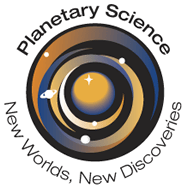Universe Today recently explored the importance of studying impact craters and what they can teach us about finding life beyond Earth. Impact craters are considered one of the many surface processes—others include volcanism, weathering, erosion, and plate tectonics—that shape surfaces on numerous planetary bodies, with all of them simultaneously occurring on Earth. Here, we will explore how and why planetary scientists study planetary surfaces, the challenges faced when studying other planetary surfaces, what planetary surfaces can teach us about finding life, and how upcoming students can pursue studying planetary surfaces, as well. So, why is it so important to study planetary surfaces throughout the solar system?
Continue reading “Planetary Surfaces: Why study them? Can they help us find life elsewhere?”NASA Selects Mission Science Instruments Searching for Habitability of Jupiter’s Ocean Moon Europa
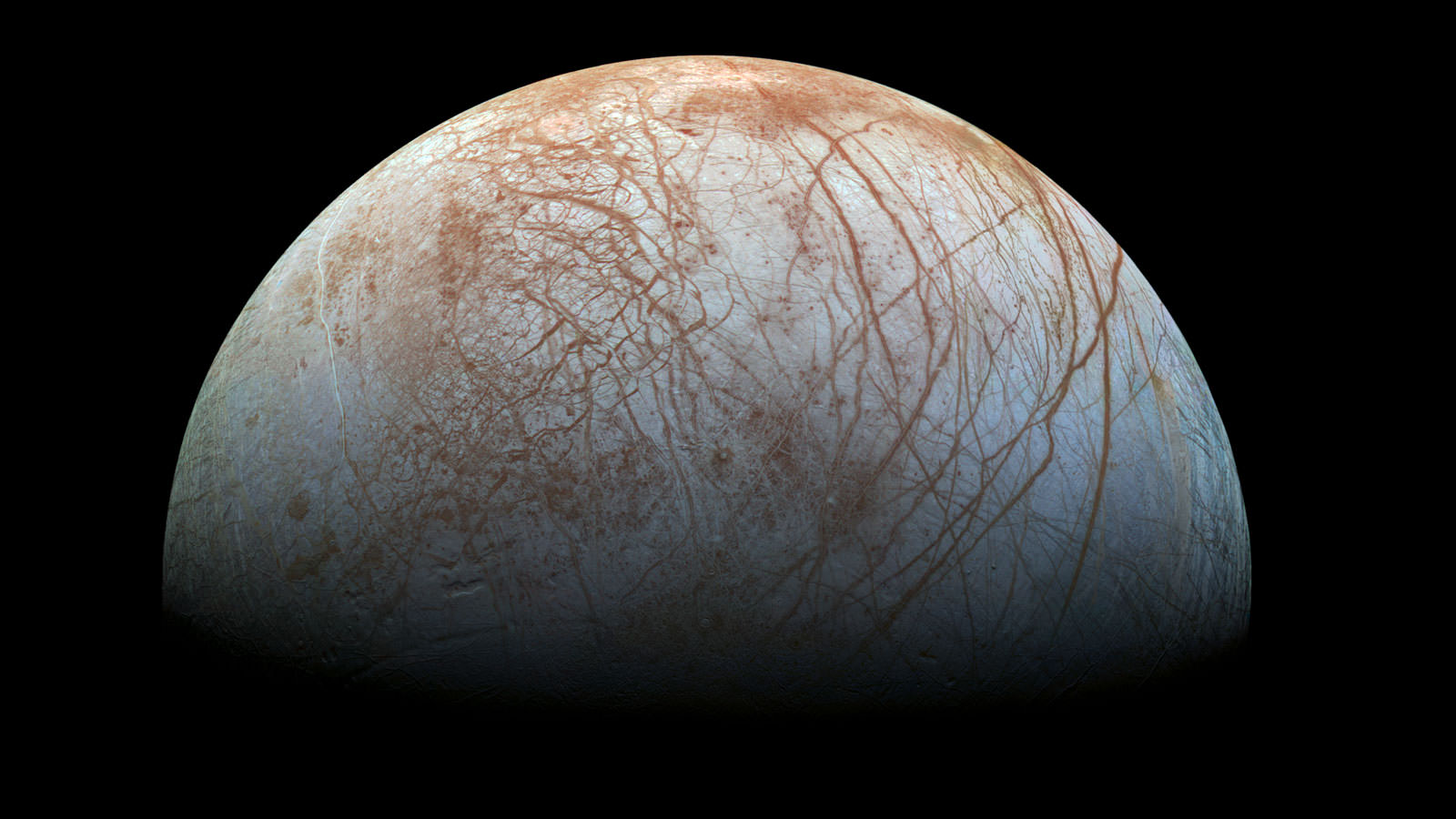
In a major move forward on a long dreamed of mission to investigate the habitability of the subsurface ocean of Jupiter’s mysterious moon Europa, top NASA officials announced today, Tuesday, May 26, the selection of nine science instruments that will fly on the agency’s long awaited planetary science mission to an intriguing world that many scientists suspect could support life.
“We are on our way to Europa,” proclaimed John Grunsfeld, associate administrator for NASA’s Science Mission Directorate in Washington, at a media briefing today outlining NASA’s plans for a mission dedicated to launching in the early to mid-2020s. “It’s a mission to inspire.”
“We are trying to answer big questions. Are we alone?”
“The young surface seems to be in contact with an undersea ocean.”
The Europa mission goal is to investigate whether the tantalizing icy Jovian moon, similar in size to Earth’s moon, could harbor conditions suitable for the evolution and sustainability of life in the suspected ocean.
It will be equipped with high resolution cameras, radar and spectrometers, several generations beyond anything before to map the surface in unprecedented detail and determine the moon’s composition and subsurface character. And it will search for subsurface lakes and seek to sample erupting vapor plumes like those occurring today on Saturn’s tiny moon Enceladus.
“Europa has tantalized us with its enigmatic icy surface and evidence of a vast ocean, following the amazing data from 11 flybys of the Galileo spacecraft over a decade ago and recent Hubble observations suggesting plumes of water shooting out from the moon,” says Grunsfeld.
“We’re excited about the potential of this new mission and these instruments to unravel the mysteries of Europa in our quest to find evidence of life beyond Earth.”
Planetary scientists have long desired a speedy return on Europa, ever since the groundbreaking discoveries of NASA’s Galileo Jupiter orbiter in the 1990s showed that the alien world possessed a substantial and deep subsurface ocean beneath an icy shell that appears to interact with and alter the surface in recent times.
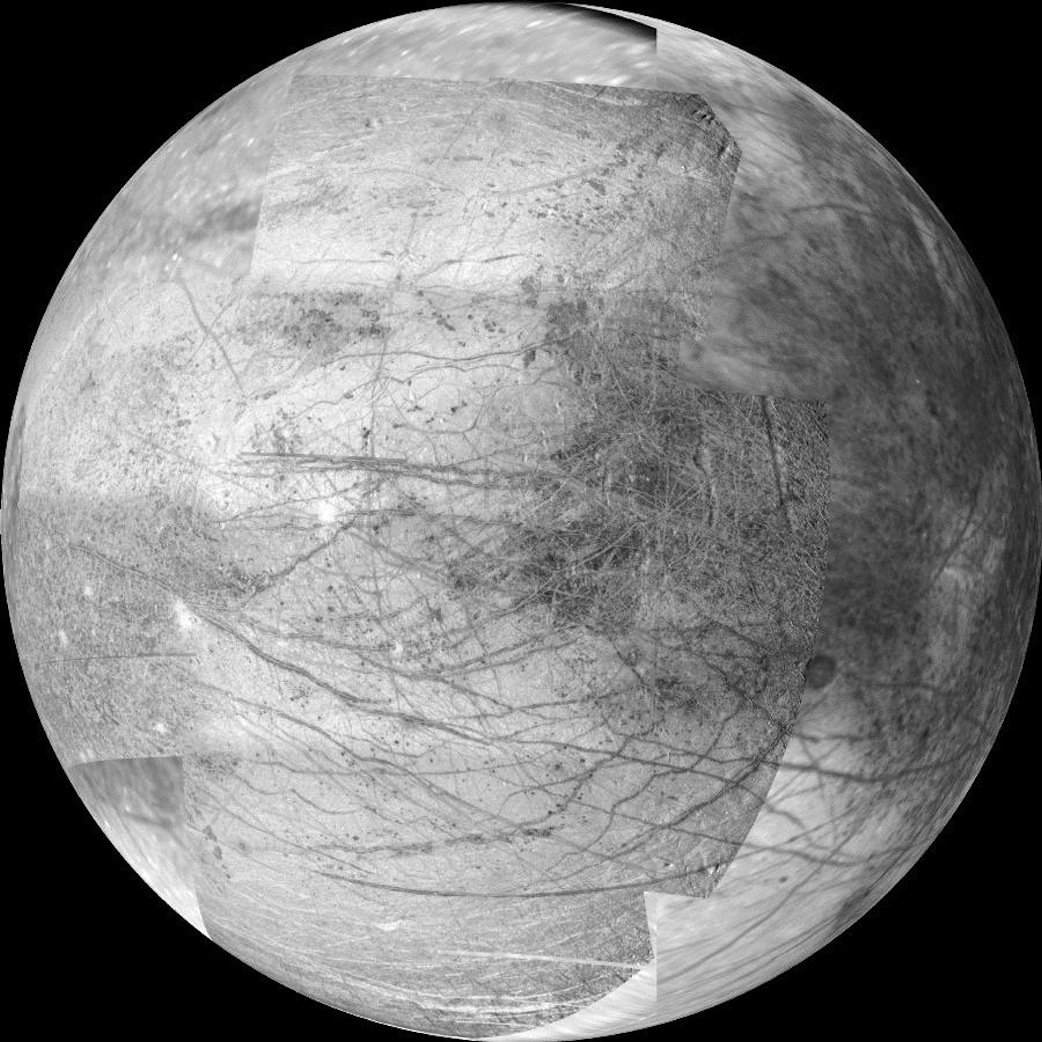
NASA’s Europa mission would blastoff perhaps as soon as 2022, depending on the budget allocation and rocket selection, whose candidates include the heavy lift Space Launch System (SLS).
The solar powered probe will go into orbit around Jupiter for a three year mission.
“The mission concept is that it will conduct multiple flyby’s of Europa,” said Jim Green. director, Planetary Science Division, NASA Headquarters, during the briefing.
“The purpose is to determine if Europa is a habitable place. It shows few craters, a brown gum on the surface and cracks where the subsurface meet the surface. There may be organics and nutrients among the discoloration at the surface.”
Europa is at or near the top of the list for most likely places in our solar system that could support life. Mars is also near the top of the list and currently being explored by a fleet of NASA robotic probes including surface rovers Curiosity and Opportunity.
“Europa is one of those critical areas where we believe that the environment is just perfect for potential development of life,” said Green. “This mission will be that step that helps us understand that environment and hopefully give us an indication of how habitable the environment could be.”
The exact thickness of Europa’s ice shell and extent of its subsurface ocean is not known.
The ice shell thickness has been inferred by some scientists to be perhaps only 5 to 10 kilometers thick based on data from Galileo, the Hubble Space Telescope, a Cassini flyby and other ground and space based observations.
The global ocean might be twice the volume of all of Earth’s water. Research indicates that it is salty, may possess organics, and has a rocky sea floor. Tidal heating from Jupiter could provide the energy for mixing and chemical reactions, supplemented by undersea volcanoes spewing heat and minerals to support living creatures, if they exist.
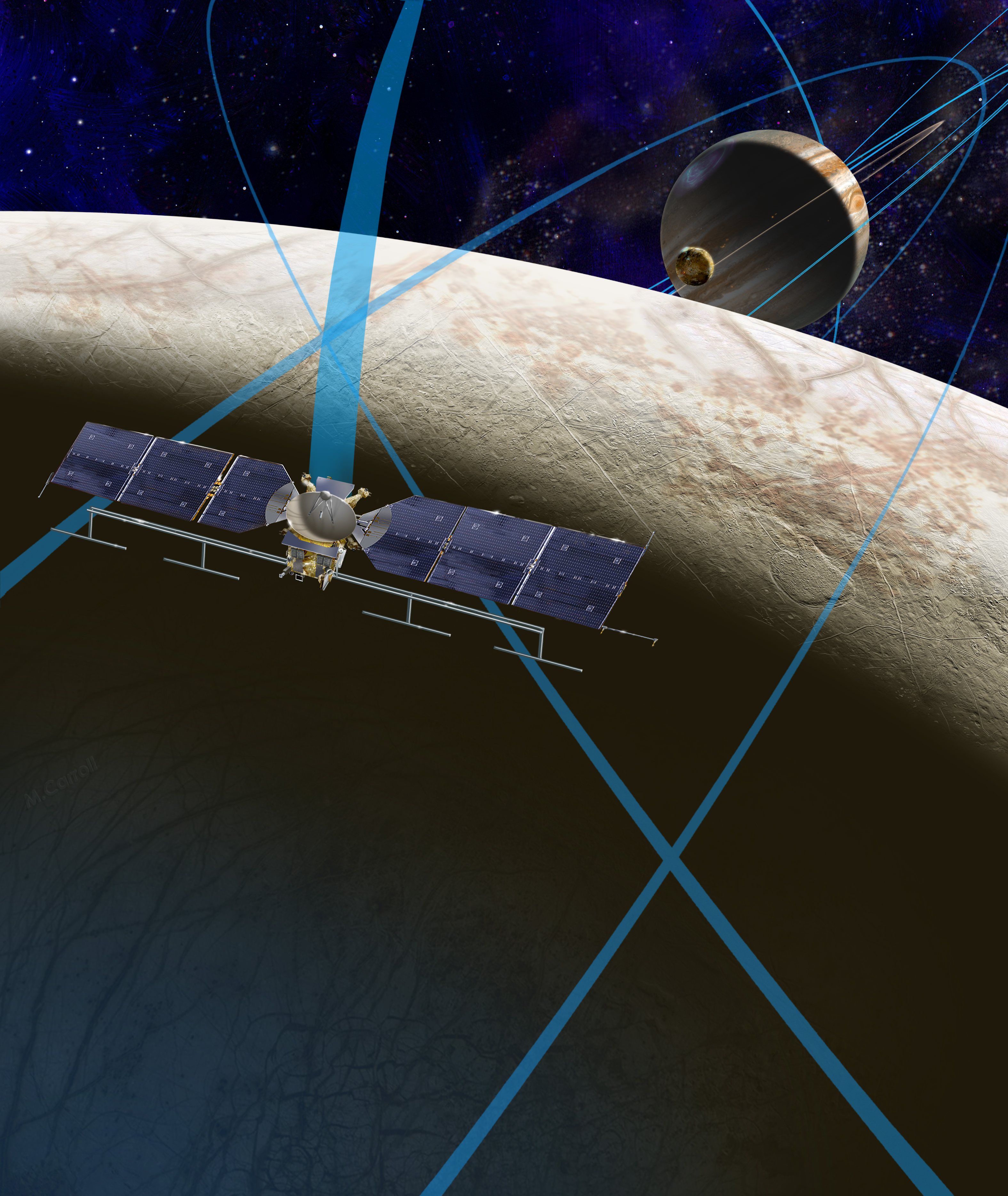
“Europa could be the best place in the solar system to look for present day life beyond our home planet,” says NASA officials.
The instruments chosen today by NASA will help answer the question of habitability, but they are not life detection instruments in and of themselves. That would require a follow on mission.
“They could find indications of life, but they’re not life detectors,” said Curt Niebur, Europa program scientist at NASA Headquarters in Washington. “We currently don’t even have consensus in the scientific community as to what we would measure that would tell everybody with confidence this thing you’re looking at is alive. Building a life detector is incredibly difficult.”
‘During the three year mission, the orbiter will conduct 45 close flyby’s of Europa,” Niebur told Universe Today. “These will occur about every two to three weeks.”
The close flyby’s will vary in altitude from 16 miles to 1,700 miles (25 kilometers to 2,700 kilometers).
“The mass spectrometer has a range of 1 to 2000 daltons, Niebur told me. “That’s a much wider range than Cassini. However there will be no means aboard to determine chirality.” The presence of Chiral compounds could be an indicator of life.
Right now the Europa mission is in the formulation stage with a budget of about $10 million this year and $30 Million in 2016. Over the next three years the mission concept will be defined.
The mission is expected to cost in the range of at least $2 Billion or more.
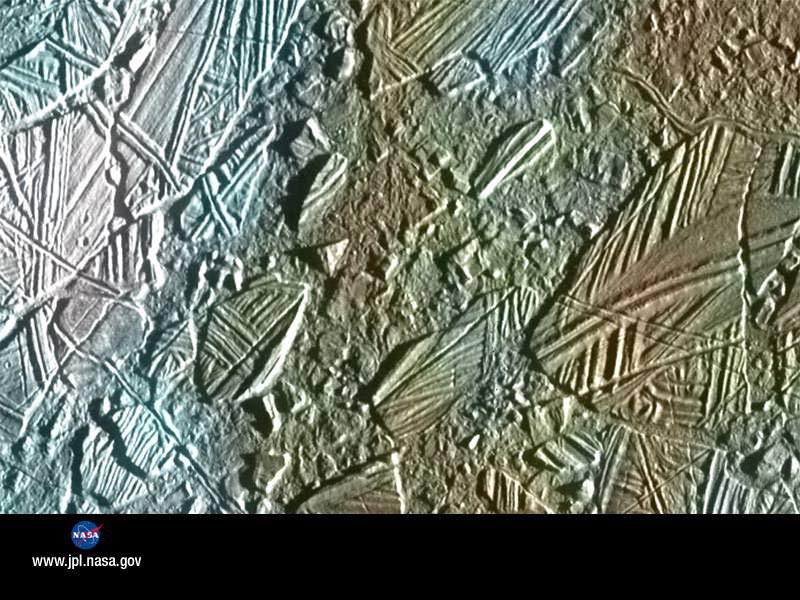
Here’s a NASA description of the 9 instruments selected:
Plasma Instrument for Magnetic Sounding (PIMS) — principal investigator Dr. Joseph Westlake of Johns Hopkins Applied Physics Laboratory (APL), Laurel, Maryland. This instrument works in conjunction with a magnetometer and is key to determining Europa’s ice shell thickness, ocean depth, and salinity by correcting the magnetic induction signal for plasma currents around Europa.
Interior Characterization of Europa using Magnetometry (ICEMAG) — principal investigator Dr. Carol Raymond of NASA’s Jet Propulsion Laboratory (JPL), Pasadena, California. This magnetometer will measure the magnetic field near Europa and – in conjunction with the PIMS instrument – infer the location, thickness and salinity of Europa’s subsurface ocean using multi-frequency electromagnetic sounding.
Mapping Imaging Spectrometer for Europa (MISE) — principal investigator Dr. Diana Blaney of JPL. This instrument will probe the composition of Europa, identifying and mapping the distributions of organics, salts, acid hydrates, water ice phases, and other materials to determine the habitability of Europa’s ocean.
Europa Imaging System (EIS) — principal investigator Dr. Elizabeth Turtle of APL. The wide and narrow angle cameras on this instrument will map most of Europa at 50 meter (164 foot) resolution, and will provide images of areas of Europa’s surface at up to 100 times higher resolution.
Radar for Europa Assessment and Sounding: Ocean to Near-surface (REASON) — principal investigator Dr. Donald Blankenship of the University of Texas, Austin. This dual-frequency ice penetrating radar instrument is designed to characterize and sound Europa’s icy crust from the near-surface to the ocean, revealing the hidden structure of Europa’s ice shell and potential water within.
Europa Thermal Emission Imaging System (E-THEMIS) — principal investigator Dr. Philip Christensen of Arizona State University, Tempe. This “heat detector” will provide high spatial resolution, multi-spectral thermal imaging of Europa to help detect active sites, such as potential vents erupting plumes of water into space.
MAss SPectrometer for Planetary EXploration/Europa (MASPEX) — principal investigator Dr. Jack (Hunter) Waite of the Southwest Research Institute (SwRI), San Antonio. This instrument will determine the composition of the surface and subsurface ocean by measuring Europa’s extremely tenuous atmosphere and any surface material ejected into space.
Ultraviolet Spectrograph/Europa (UVS) — principal investigator Dr. Kurt Retherford of SwRI. This instrument will adopt the same technique used by the Hubble Space Telescope to detect the likely presence of water plumes erupting from Europa’s surface. UVS will be able to detect small plumes and will provide valuable data about the composition and dynamics of the moon’s rarefied atmosphere.
SUrface Dust Mass Analyzer (SUDA) — principal investigator Dr. Sascha Kempf of the University of Colorado, Boulder. This instrument will measure the composition of small, solid particles ejected from Europa, providing the opportunity to directly sample the surface and potential plumes on low-altitude flybys.
Stay tuned here for Ken’s continuing Earth and planetary science and human spaceflight news.
Budget Axe to Gore America’s Future Exploration of Mars and Search for Martian Life

[/caption]
America’s hugely successful Mars Exploration program is apparently about to be gutted by Obama Administration officials wielding a hefty budget axe in Washington, D.C. Consequently, Russia has been invited to join the program to replace American science instruments and rockets being scrapped.
NASA’s Fiscal 2013 Budget is due to be announced on Monday, February 13 and its widely reported that the Mars science mission budget will be cut nearly in half as part of a significant decline in funding for NASA’s Planetary Science Division.
The proposed deep slash to the Mars exploration budget would kill NASA’s participation in two new missions dubbed “ExoMars” set to launch in 2016 and 2018 as a joint collaboration with the European Space Agency (ESA).
The ESA/NASA partnership would have dispatched the Trace Gas Orbiter to the Red Planet in 2016 to search for atmospheric methane, a potential signature for microbial life, and an advanced Astrobiology rover to drill deeper into the surface in 2018. These ambitious missions had the best chance yet to determine if Life ever evolved on Mars.
The 2016 and 2018 ExoMars probes were designed to look for evidence of life on Mars and set the stage for follow on missions to retrieve the first ever soil samples from the Red Planet’s surface and eventually land humans on Mars.

- Planned 2016 Orbiter and 2018 Rover. NASA participation will be scrapped due to slashed NASA funding by the Obama Admnistartion. Credit: ESA
The proposed Mars budget cuts will obliterate these top priority science goals for NASA.
The BBC reports that “ a public announcement by NASA of its withdrawal from the ExoMars program will probably come once President Obama’s 2013 Federal Budget Request is submitted.”
A Feb. 9 article in ScienceInsider, a publication of the journal Science, states that “President Barack Obama will propose a $300 million cut in NASA’s planetary science programs as part of his 2013 request for the agency.”
This would amount to a 20% cut from $1.5 Billion in 2012 to $1.2 Billion in 2013. The bulk of that reduction is aimed squarely at purposefully eliminating the ExoMars program. And further deep cuts are planned in coming years !
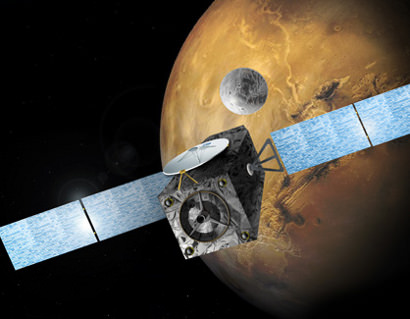
The Mars budget of about $580 million this year would be radically reduced by over $200 million, thereby necessitating the end of NASA’s participation in ExoMars. These cuts will have a devastating impact on American scientists and engineers working on Mars missions.
The fallout from the looming science funding cuts also caused one longtime and top NASA manager to resign.
According to ScienceInsider, Ed Weiler, NASA’s science mission chief, says he “quit NASA Over Cuts to Mars Program.”
“The Mars program is one of the crown jewels of NASA,” said Ed Weiler to ScienceInsider.
“In what irrational, Homer Simpson world would we single it out for disproportionate cuts?”
“This is not about the science mission directorate, this is not even about NASA. This is about the country. We are the only country in the world that has demonstrated the capability to land anything on Mars. How can we allow that to be undermined?”
Weiler’s resignation from NASA on Sept. 30, 2011 was sudden and quick, virtually from one day to the next. And it came shortly after the successful launch of NASA’s GRAIL lunar probes, when I spoke to Weiler about Mars and NASA’s Planetary Science missions and the gloomy future outlook. Read my earlier Universe Today story about Weiler’s retirement.
Ed Weiler was the Associate Administrator for NASA’s Science Mission Directorate (SMD) and his distinguished career spanned almost 33 years.
The dire wrangling over NASA’s 2013 budget has been ongoing for many months and some of the funding reductions had already leaked out. For example NASA had already notified ESA that the US could not provide funding for the Atlas V launchers in 2016 and 2018. Furthermore, Weiler and other NASA managers told me the 2018 mission was de-scoped from two surface rovers down to just one to try and save the Mars mission program.
ESA is now inviting Russian participation to replace the total American pullout, which will devastate the future of Red Planet science in the US. American scientists and science instruments would be deleted from the 2016 and 2018 ExoMars missions.
The only approved US mission to Mars is the MAVEN orbiter due to blastoff in 2013 – and there are NO cameras aboard MAVEN.
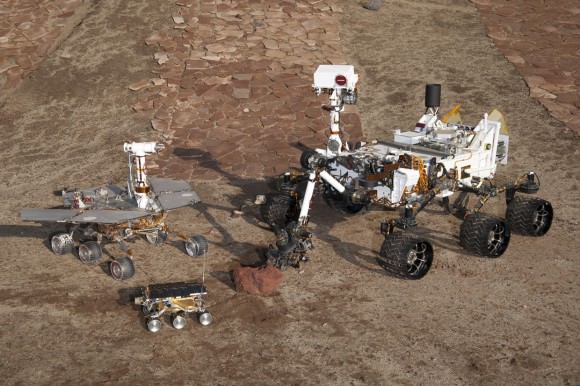
NASA is caught in an inescapable squeeze between rising costs for ongoing and ambitious new missions and an extremely tough Federal budget environment with politicians of both political affiliations looking to cut what they can to rein in the deficit, no matter the consequences of “killing the goose that laid the golden egg”.
NASA Watch Editor Keith Cowing wrote; “Details of the FY 2013 NASA budget are starting to trickle out. One of the most prominent changes will be the substantial cut to planetary science at SMD [NASA’s Science Mission Directorate]. At the same time, the agency has to eat $1 billion in Webb telescope overruns – half of which will come out of SMD.”
The cost of the James Webb Space Telescope (JWST) has skyrocketed to $8.7 Billion.
To pay for JWST, NASA is being forced to gut the Mars program and other science missions funded by the same Science Mission Directorate that in the past and present has stirred the public with a mindboggling payoff of astounding science results from many missions that completely reshaped our concept of humankinds place in the Universe.
Meanwhile, China’s space program is rapidly expanding and employing more and more people. China’s scientific and technological prowess and patent applications are increasing and contributing to their fast growing economy as American breakthroughs and capabilities are diminishing.
Under the budget cutting scenario of no vision, the Curiosity Mars Science Laboratory rover will be America’s last Mars rover for a long, long time. Curiosity will thus be the third and last generation of US Mars rovers – 4th generation to be Axed !
NASA Planetary Science Not Being Killed, Says NASA Official
Murmurs of disbelief and “say it ain’t so” rippled across social media outlets late Wednesday and early Thursday in reaction to an op-ed by Mars Society President Robert Zubrin, who claimed that “the Obama administration intends to terminate NASA’s planetary exploration program.” The article was published in the Washington Times, and claimed that the Office of Management and Budget (OMB) was also targeting the space astronomy program “for destruction.” This would all be horrible if true, but the director of NASA’s Planetary Science division, Jim Green assured members of the NASA Advisory Council’s Planetary Science subcommittee that it is not.
“It is not true the planetary program is being killed,” Green told members during a teleconference, according to Space News.
While the future of NASA’s budget is not looking stellar by any means, gutting NASA’s “crown jewel” – the very successful planetary science division — seems ludicrous and Zubrin’s claims appear unfounded. He supplied no source of his details beyond saying he had “leaked” information. Likely, his article was his way of advertising an upcoming symposium he is part of, a tactic he has used before.
NASA is likely facing budget cuts but not because of President Obama. In 2010, the President proposed to give NASA an additional $6 billion over five years, but Congress couldn’t agree on the 2011 budget and NASA since has worked under a continuing resolution at 2010 funding levels. In the latest budget proposal, Obama proposed freezing NASA’s budget for five years (not cutting), putting the budget at $18.7 billion annually through fiscal 2016. The budget provided $5 billion for science, including $1.54 billion for planetary science, along with $3.9 billion for future exploration systems and $569 million for aeronautics research.
NASA is still waiting for Congress to vote on their budget.


